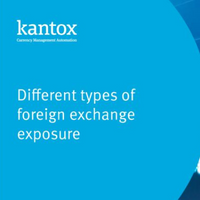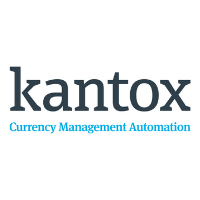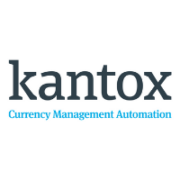The hidden secret behind the different types of foreign exchange exposure
23-11-2021 | treasuryXL | Kantox | LinkedIn
Fresh from leaving the famous Genesis rock band that he helped found, songwriter and musician Peter Gabriel came out with an innovative album called Exposure, where his fascination with electronics and new recording techniques was openly on display. In the eponymous song, he kept on droning the E-word over and over:
Exposure
Exposure
Exposure
Exposure
Exposure
At Kantox we share this almost obsessive-like concern. But we care about FX exposure, a very specific kind of exposure. And so do most corporate treasurers: according to the last Kantox & TMI FX Survey, exposure-related concerns are seen by as many as 66% of participants as the most important FX challenge faced by companies.
In this blog we seek to determine the three types of foreign exchange exposure:
- Forecasts of revenues and expenditures
- Firm commitments for sales/purchase orders
- Accounts receivable/payable
Understanding the different types of foreign exchange exposure
FX exposure, in a nutshell, is the degree to which a company is affected by changes in exchange rates. To arrive at a precise definition of the three types of foreign exchange exposure, we need to understand the goals set by management in terms of its FX risk management policy.
If the goal is to remove accounting FX gains and losses, then accounts receivable and payable are the key pieces of exposure. If, however, management seeks to protect company cash flows from currency fluctuations, then the relevant type of exposure results from a set of company-specific business parameters.
These parameters include the firm’s sensitivity to FX (as measured by its profit margins and the weight of foreign currencies in the business), its degree of forecasting accuracy, the forward premium/discount of the currencies in which it operates, and several others. But the decisive element to consider is the firm’s pricing parameters.
Steady or dynamic prices? Forecasts and firm commitments
When determining the types of FX exposure, pricing dynamics play a key role. Does the company adjust selling prices after a campaign or budget period is over? Does it attempt to keep prices steady for a set of periods ahead? Or does it price dynamically with an FX rate? (*). Most firms implement one, or a combination, of the following pricing strategies:
Steady prices for individual campaigns/budgets. Some businesses keep steady prices for an entire campaign or budget and adjust them as the following campaign or budget period unfolds, thus incorporating FX fluctuations into the new prices.
⇒ TYPE OF FX EXPOSURE: forecasted sales and expenditures for each individual campaign or budget.
Steady prices for a set of campaigns/budgets. Competitive pressures may lead firms to keep steady prices across a set of campaigns or budgets without adjusting them, even in the face of sharp adverse currency fluctuations.
⇒TYPE OF FX EXPOSURE: rolling forecasts for sales and expenditures across a set of campaigns or budgets.
Dynamic prices. For firms that operate in a dynamic pricing environment, pricing is itself a natural hedging mechanism. FX risk arises from the time lapse between the moment a transaction is contracted and the moment it is finally settled in cash.
⇒TYPE OF FX EXPOSURE: firm commitments for sale and purchase orders
FX management and the types of foreign exchange exposure
This brief overview of the three types of foreign exchange exposure provides the starting point for a well-structured FX management process. Exposure items must be properly collected and processed before hedging programs can be implemented. Risk managers must know with precision how to retrieve, from disparate company systems, the information relating to each type of exposure.
Whereas most Treasury Management Systems provide the necessary information in terms of accounts payable/receivable, data about the two other forms of FX exposure —forecasts and firm commitments— are usually scattered between a host of company systems (ERP, CRM, specific software tools) and spreadsheets. This leads to a number of practical problems whose importance is usually underestimated:
- Can the relevant pieces of exposure be retrieved in a timely manner?
- Is the information complete and granular enough?
- Who validates it, and through which processes?
Quite logically, the level of complexity increases in situations where different pricing parameters coexist within the enterprise, many currency pairs are in use, and both accounting and cash-flow related exposures are treated.
Technology to the rescue
The good news for treasurers is that Currency Management Automation allows them to efficiently collect and process the firm’s FX exposure with procedures that eliminate human error and other operational risks. The solution uses APIs to run the end-to-end FX workflow, allowing exposure data to seamlessly flow between different systems —ERP, TMS and others— without any need for spreadsheets.
Treasurers set up their own business rules according to the different types of foreign exchange exposure they need to collect and process, and let technology remove the risks and costs associated with manually executed tasks. With an added bonus: they can remove concerns about the accuracy of their budgeted FX exposure, giving them more time to improve forecasts.
(*) Note that more than one type of price dynamics can exist within the same company — think of heavy machines, spare parts, and services in the industrial engineering space, each with its different pricing criteria. In this case, the type of FX exposure will be different for each business line.











